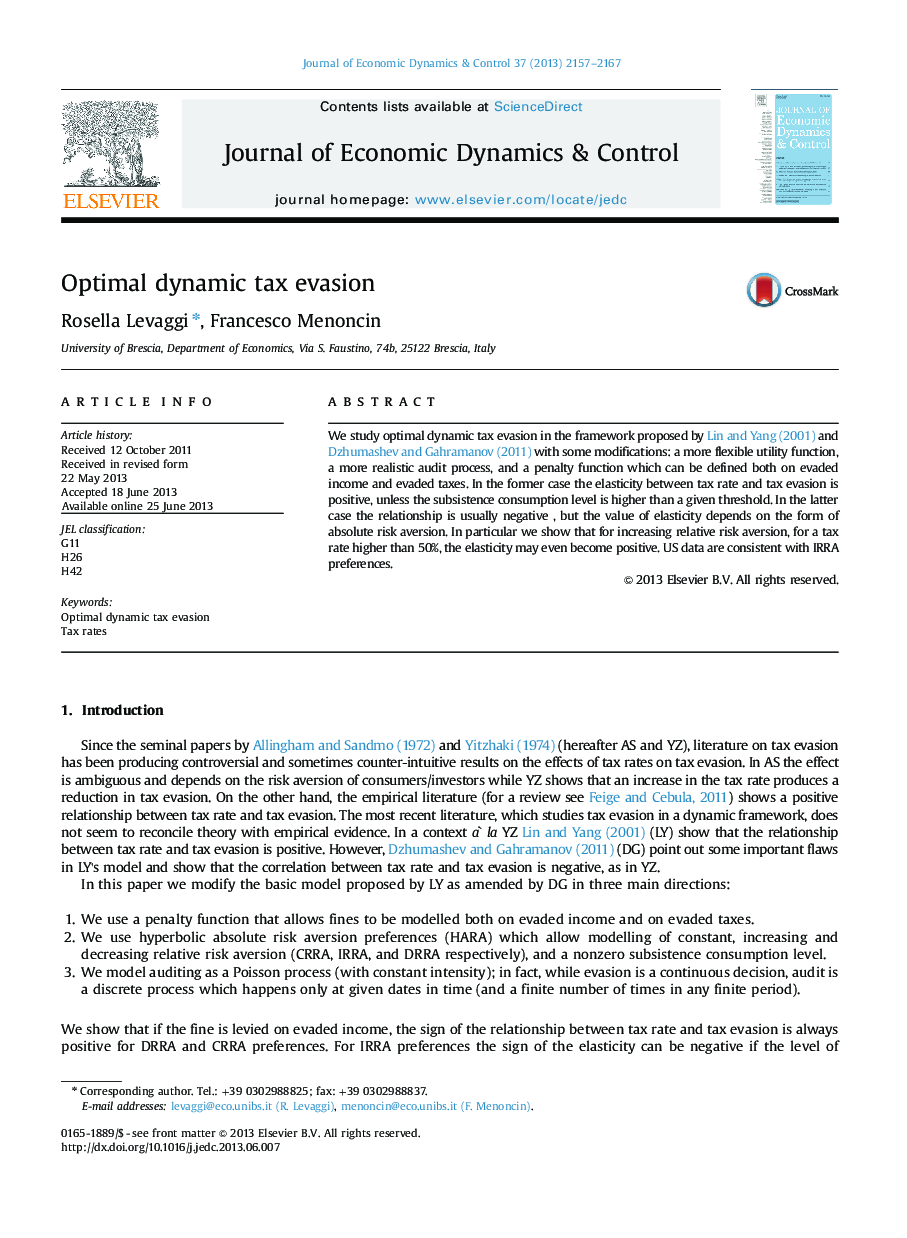| Article ID | Journal | Published Year | Pages | File Type |
|---|---|---|---|---|
| 5098726 | Journal of Economic Dynamics and Control | 2013 | 11 Pages |
Abstract
We study optimal dynamic tax evasion in the framework proposed by Lin and Yang (2001) and Dzhumashev and Gahramanov (2011) with some modifications: a more flexible utility function, a more realistic audit process, and a penalty function which can be defined both on evaded income and evaded taxes. In the former case the elasticity between tax rate and tax evasion is positive, unless the subsistence consumption level is higher than a given threshold. In the latter case the relationship is usually negative , but the value of elasticity depends on the form of absolute risk aversion. In particular we show that for increasing relative risk aversion, for a tax rate higher than 50%, the elasticity may even become positive. US data are consistent with IRRA preferences.
Related Topics
Physical Sciences and Engineering
Mathematics
Control and Optimization
Authors
Rosella Levaggi, Francesco Menoncin,
